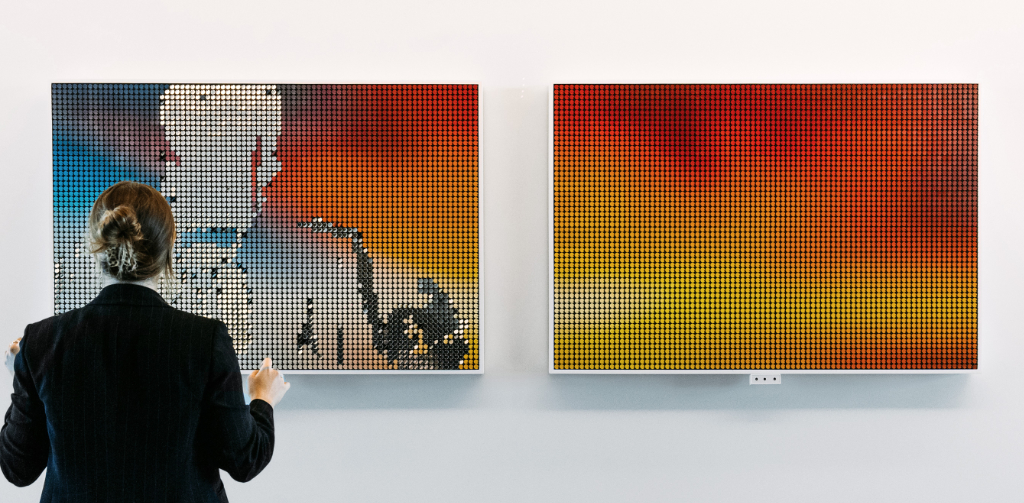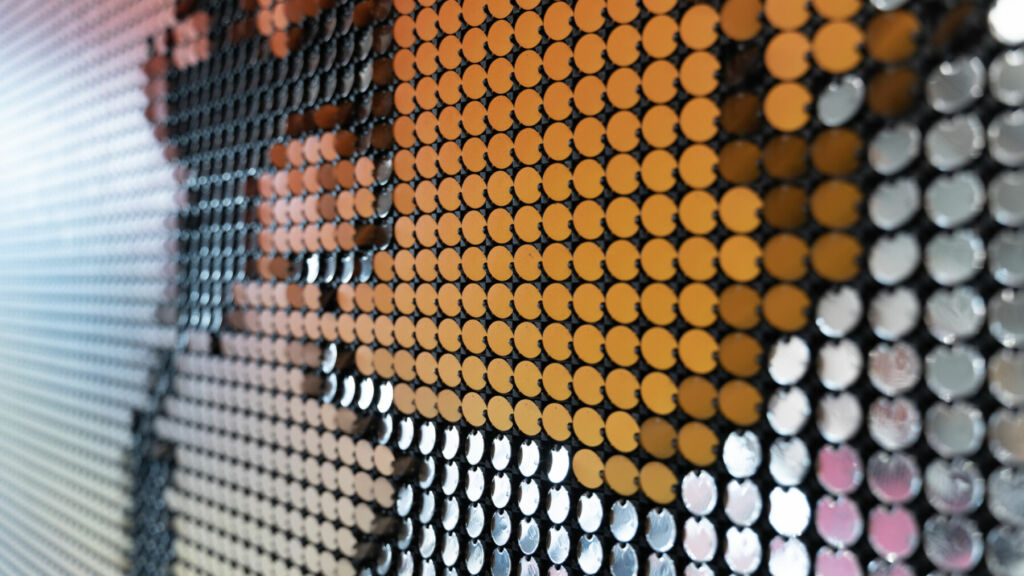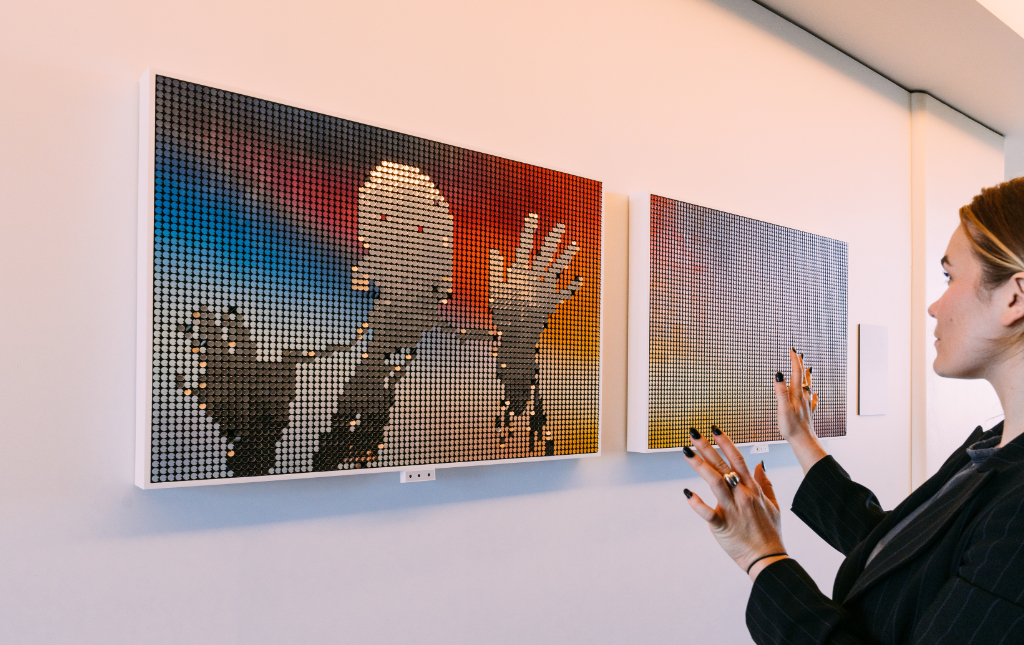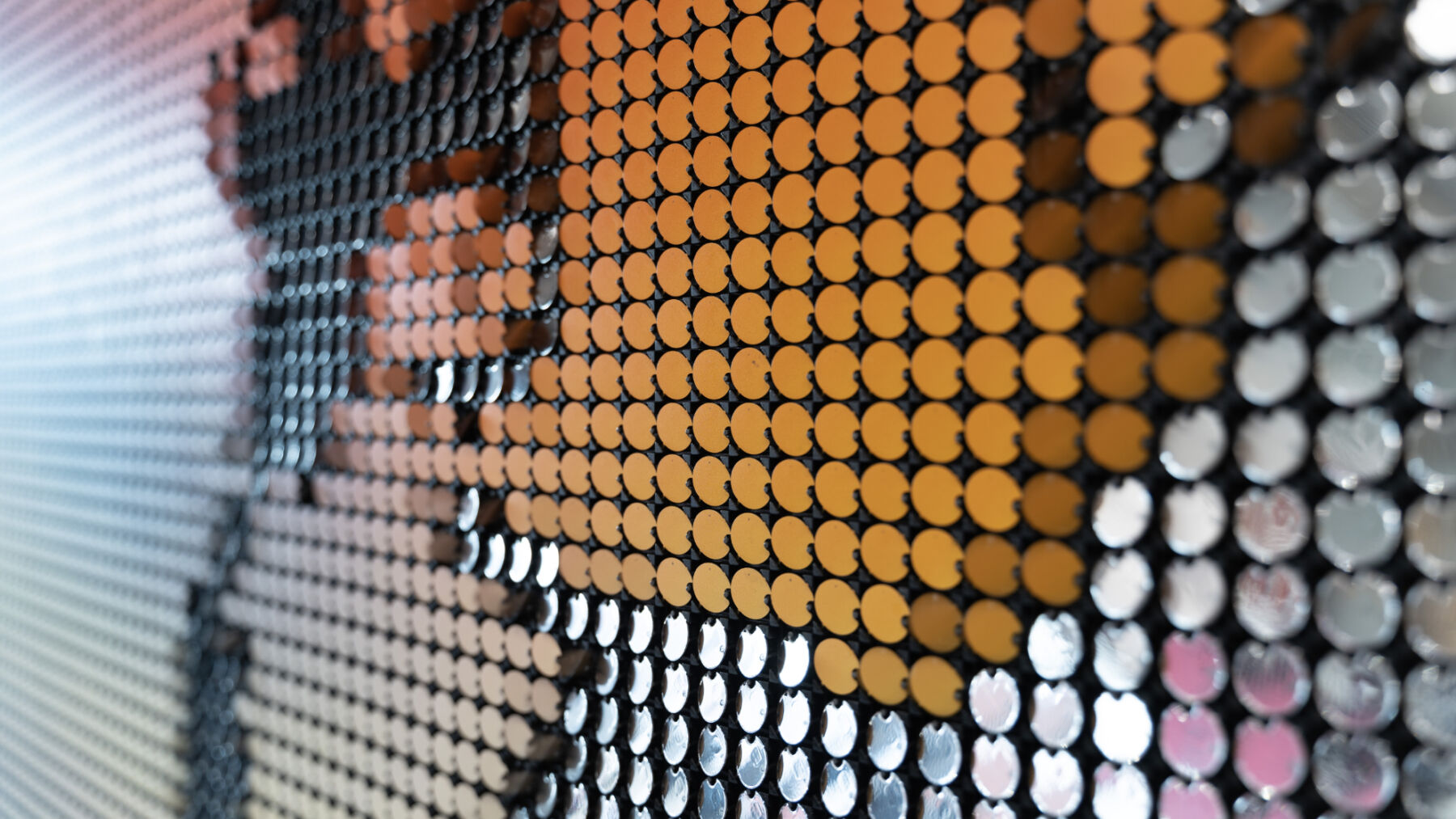Interview by Juliette Wallace

New York art collective BREAKFAST name is born from the search to combine content and container in art, science and technology. They achieve this through the “learn-by-doing” method, which, more often than not, involves a significant amount of quick-paced destruction, i.e. “BREAK-FAST”. Combining the coding and tech backgrounds of the two BREAKFAST founders, Andrew Zolty and Mattias Gunneras, the art group focus on incarnating back-end numbers into physical, visible, tangible objects. The aim: to engage with the modern public, stimulating awareness and change through bridging the digital/physical, information/entertainment and geographical gaps.
The group has created numerous critically acclaimed works, including Awaken (made from BREAKFAST’s custom Brixels medium), and the elegant Cedar Point Reeds, a recent BREAKFAST innovation involving acrylic reeds that move and bow in imitation of the wind that feeds Cedar Point Wind Farm—a 252-megawatt wind farm 80 miles east of Denver. BREAKFAST’s use of technology, mechanical engineering and aesthetics pairs with their individual personalities and global viewpoints to make pieces that can be accessed on various levels – from light-hearted, fun and beautiful to deeper messages about the environment and our current global state. This delicate and well-executed balance is what makes BREAKFAST successful and why they continue to display in some of the world’s most recognisable venues.
The globally-focused art group were recently engaged by their hometown of New York for a commission at one of the city’s core locations: the Rockefeller Centre. The enormous and historical New York landmark asked BREAKFAST to be one of a series of artists to partake in their ‘Top of the Rock’, New Frontiers, art exhibition, a show held on the roof of the dizzyingly tall 1930s building that engaged both the art viewing and the general public, a perfect crowd for the democratically driven BREAKFAST.
Time Capsule Over Manhattan, an interactive work that captures and freezes the viewer and their surroundings in time through the BREAKFAST’s custom-made flip-disc medium, was the group’s contribution to New Frontiers, and it proved very popular with the audience. The work re-jigged the flip-disc setup to create a kinetic and responsive work that not only invites the viewer in but captures them as part of the work itself. Time Capsule invites the viewer to explore the intersection of the past and present and to leave their own mark on the artwork’s history.
Co-founders of BREAKFAST discuss with CLOT this new commission as well as the birth of the BREAKFAST collective, the learning curve the group has (and continues to) traced, and the importance of the viewer’s experience in their output.



Let’s start with the basics: why BREAKFAST; what does the name mean, and what does the group stand for?
When we started BREAKFAST, we aimed to bridge the gap between the digital and physical realms by crafting custom, tangible creations. Despite our backgrounds in art, design, and software, we needed to gain experience in hardware, so we had to learn quickly by trial and error. We realised that breaking things quickly was essential to the learning process, hence the name BREAK-FAST. It represents our commitment to experimenting and pushing boundaries to achieve our vision.
BREAKFAST is headed by Andrew Zolty and Mattias Gunneras. How did they/you meet, and what was it that inspired them/you to work together?
Mattias and I met in the early 2000s, cutting our teeth in the world of Flash websites. This is where we developed our skills in conceiving creative ideas, backend programming, and frontend animation and interactivity. In 2007, we both became interested in extending these skills into electronics and mechanical design/engineering and began working on such projects together, eventually leading us to create BREAKFAST.
BREAKFAST’s artworks are both superficially attractive/entertaining whilst simultaneously being dense in meaning and, often, warning signals. So how is it to strike the balance between these two things, and how does one serve the other’s cause?
Creating works that draw attention to social and environmental issues is of great importance to us. However, we also enjoy creating fun, beautiful and interactive works. Balancing these two elements can be challenging, but we strive to create a common experience that combines them. The experience we try to create is to draw people in through the kinetic movement and interactive nature of the work, but when they happen upon the placard on the wall next to the piece, they discover how the piece is also a data visualisation showing the real-time temperature, air quality, water level, CO2 reading, etc. of a particular location. This moment of realisation is incredibly satisfying to witness, as it effectively demonstrates the significance of our message.
BREAKFAST recently unveiled its first ‘Reeds sculpture’ to a great response. The materials in your works are vital for appearance but functionality, and active properties are equally important considering their technological and interactive nature. So what are BREAKFAST’s favourite materials to work with and why, and what are some materials that BREAKFAST would like to explore further in the future?
Our favourite materials to work with include wood, fabrics, recycled plastics, and other sustainable and natural materials. However, we have found ourselves primarily using engineered materials for longevity and cost-efficiency, as we prioritise ensuring that our creations can be shared with the world. Over time, we evolve our pieces artistically and aesthetically while incorporating new materials that meet our high standards. We are just beginning to work with more diverse and sustainable materials that better align with our values, and we look forward to exploring their potential in future works.
Considering BREAKFAST’s origins and roots, New York frequently appears in the artworks, but the rest of the world is also often involved through data collection and representation. Do you see the potential of a borderless future in the kinds of technologies you use – i.e. data collection and visualisation – and can BREAKFAST see any real-world impact of the works the group creates (i.e. on government policies or technological development)?
Over 150 of our artworks have been purchased and commissioned by collectors, with nearly half of them located outside of the US. We take a global approach to our work and incorporate data from worldwide. Our use of data collection and visualisation reflects the potential of a borderless future. We aim to create artworks that can be appreciated by people from all walks of life and all corners of the world. While we aren’t aware that our work directly influences government policies or technological development, we hope that our works spark meaningful conversations and inspire positive change in our society.
BREAKFAST’s most recent work, Time Capsule Over Manhattan, was commissioned by the Rockefeller Center for their Top of the Rock Observation Deck. What was the main inspiration for this piece, and what does BREAKFAST hope will be the legacy?
The inspiration for Time Capsule Over Manhattan came from the iconic view of Manhattan from the Top of the Rock at sunset. In addition, the time capsule aspect of the artwork was inspired by the idea of preserving the millions of visitors who come to the observation deck each year, thus making them a timeless piece of the artwork itself.
The project was particularly meaningful to us because it was part of the “New Frontiers” exhibition inspired by Abby Aldrich Rockefeller’s support for cutting-edge artists. We hope that this work’s legacy will inspire visitors to think deeply about the relationship between technology, art, and the urban landscape.
BREAKFAST embraces development and the combining of the past with the future. Were there any new technologies used in Time Capsule Over Manhattan, and if so, how were they arrived at and achieved?
While we generally utilise the latest technology in our works, Flip-Discs (as used in Time Capsule Over Manhattan) were invented over 80 years ago. However, we have applied modern engineering to create a new, improved version of the technology. This artwork perfectly balances past and present technology, showcasing how traditional technology can be adapted and enhanced to create something completely new and captivating.
Is there ever a concern that with works like Time Capsule Over Manhattan, the human ego becomes more important than the work?
In our opinion, the best art elicits an unconscious emotional reaction. Therefore, to create something that not only puts a smile on people’s faces but also pulls them in and keeps them there, we see nothing other than a great successful artwork.
What is your chief enemy of creativity?
Social media. While it has its benefits in terms of allowing creators to share their work and inspire others, it can also be detrimental to creativity. It’s easy to fall into the trap of seeking inspiration from others rather than generating ideas from within. This can result in a lack of originality and uniqueness. We believe that staring at a blank sheet of paper and challenging oneself to come up with something genuinely new is crucial to maintaining creativity.
You couldn’t live without…
Making new things.






